Wild ramps are a type of onion that are delicious, popular, elusive, and sought after. Also called wild leeks, it is very important to properly identify and sustainably forage ramp plants. Once harvested, wild ramps make a delicious and flavorful addition to many meals!
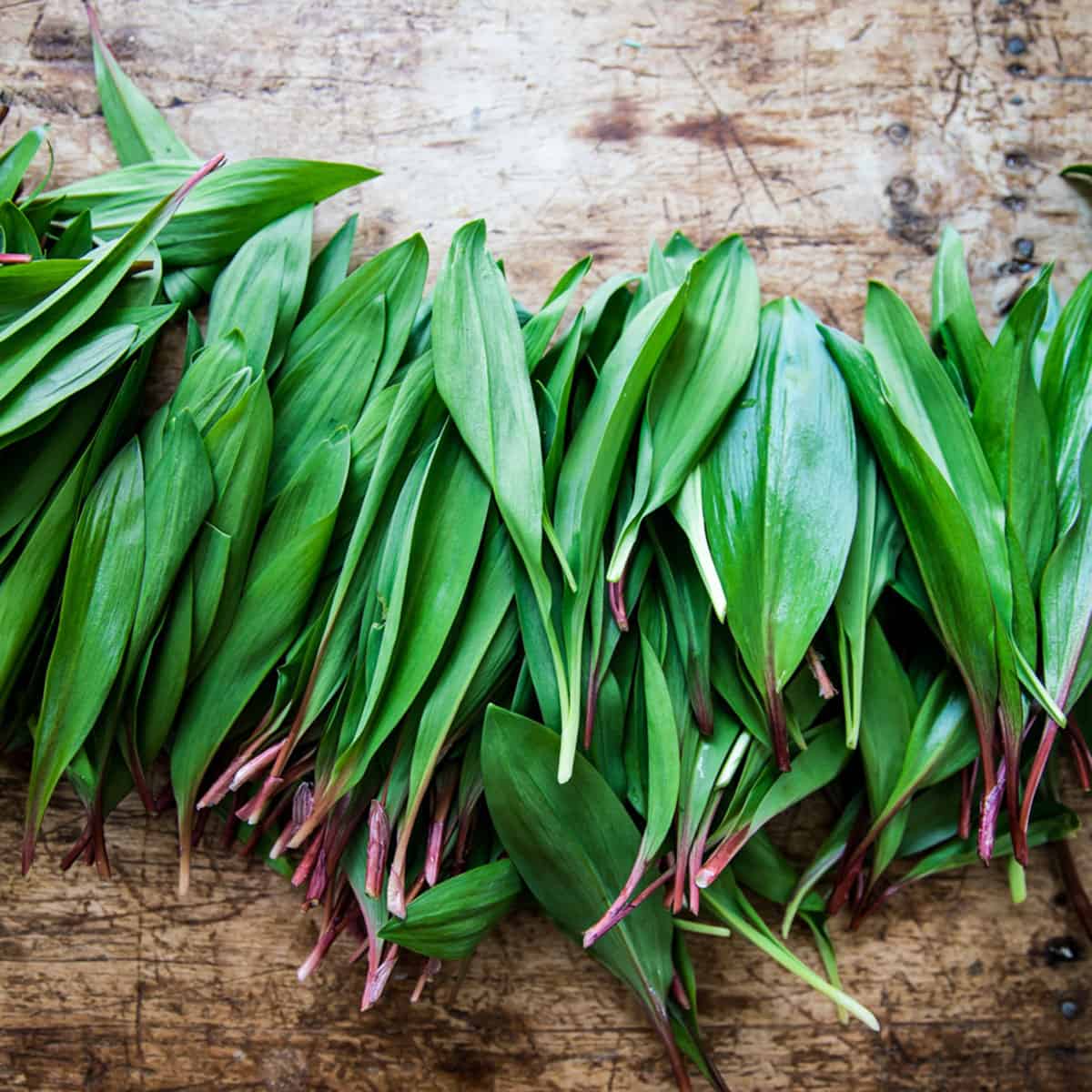
Want to save this post for later?
What are Ramps?
Ramps (Allium tricoccum) are a perennial species of wild onion with a strong onion or garlic flavor. The ramp plant is wild growing in some areas and is also called wild leek, wild garlic, or ramsons.
Wild ramps are native to eastern North America and grow widespread in the eastern United States and Canada. Although I had heard much about them when I lived in the west, I had never seen them before I moved to Vermont!
Allium ursinum, also called wild garlic, is a related species that grows in Europe and Asia and can be used the same as wild leeks.
Ramps grow from March to June depending on your location. They are one of the earliest plants to forage in the spring, which is a happy sight for those of us who have long winters.
Related: What to Forage in Spring: 20 Edible and Medicinal Plants and Fungi, 13 Early Spring Edible Wild Greens
Where Can I Find Wild Ramps?
Wild ramps grow in eastern Canadian provinces, and in much of the northeastern United States, as far west as Minnesota and south as Georgia. It is common to find ramp plants in New England and the Appalachian mountains.
Ramps do not grow wild in the western US but can be planted and grown in a home garden. This is a wonderful way to have access to ramps and their tasty flavor without harming the population.
Wild leeks are found growing in clusters on the forest floor, often popping up through fallen leaves of deciduous hardwood forests. They tend to like damp areas but can be found in many types of rich soil.
Is Wild Leek Invasive?
Sometimes ramp plants grow in huge patches or colonies, so to the naked eye, it might appear that they are invasive. However, they take over 7 years to grow so are not considered invasive.
Wild leeks are actually protected due to overharvesting in many areas.
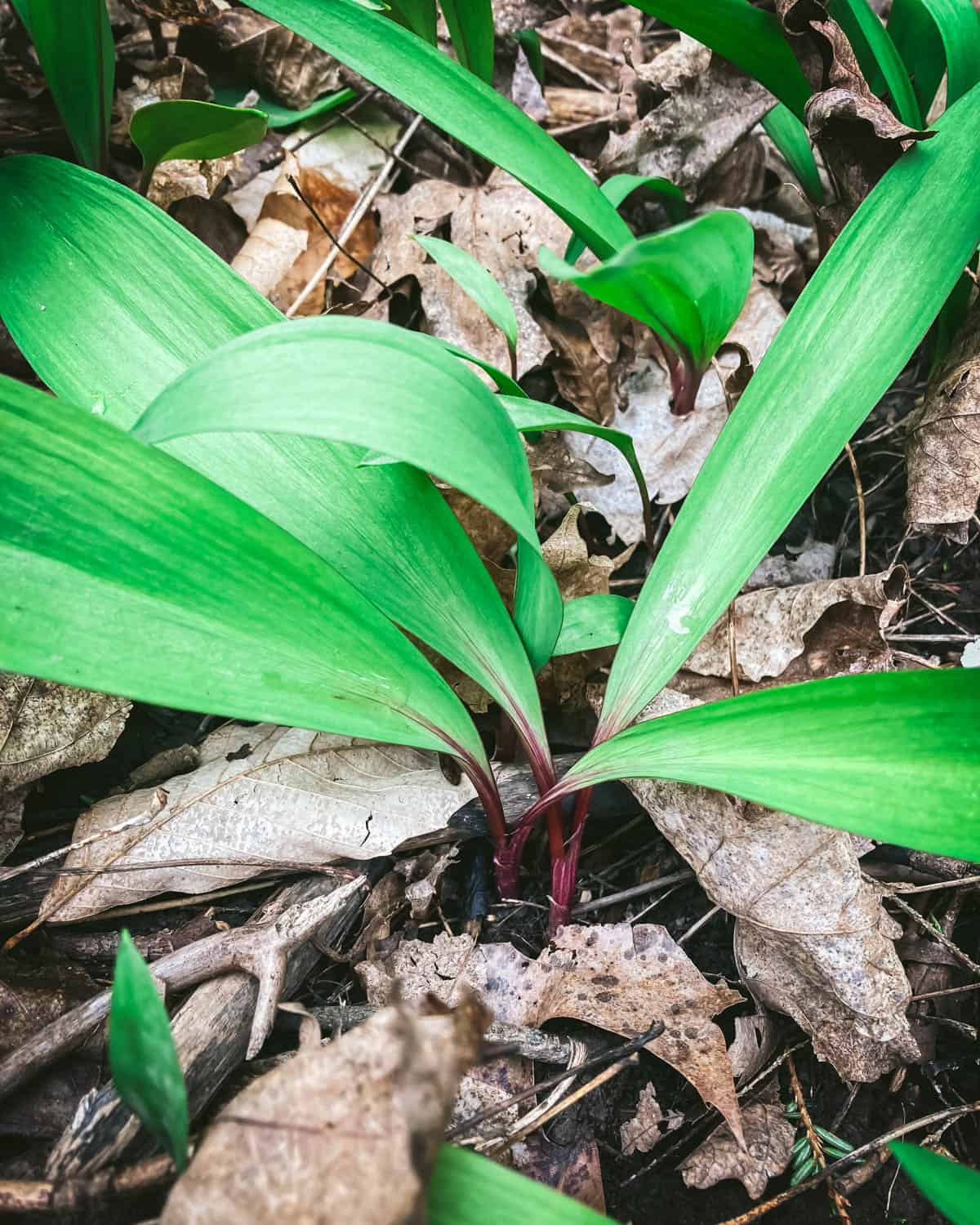
How to Identify Wild Ramps
To identify wild ramps for while foraging, look for plants that are low growing, about 4-12 inches high. They have 1-3 broad leaves per plant and either white or reddish-purple stems (there are 2 varieties).
Ramp plants have flowers that bloom in the summer after the leaves have died back. The flowers look similar to cultivated onion flowers and produce black seeds.
A key identifying factor is that they smell like onion or garlic. This is a very important identification characteristic as toxic look-alikes won’t have this smell.
If it doesn’t unmistakably smell like an onion, it’s not a ramp!
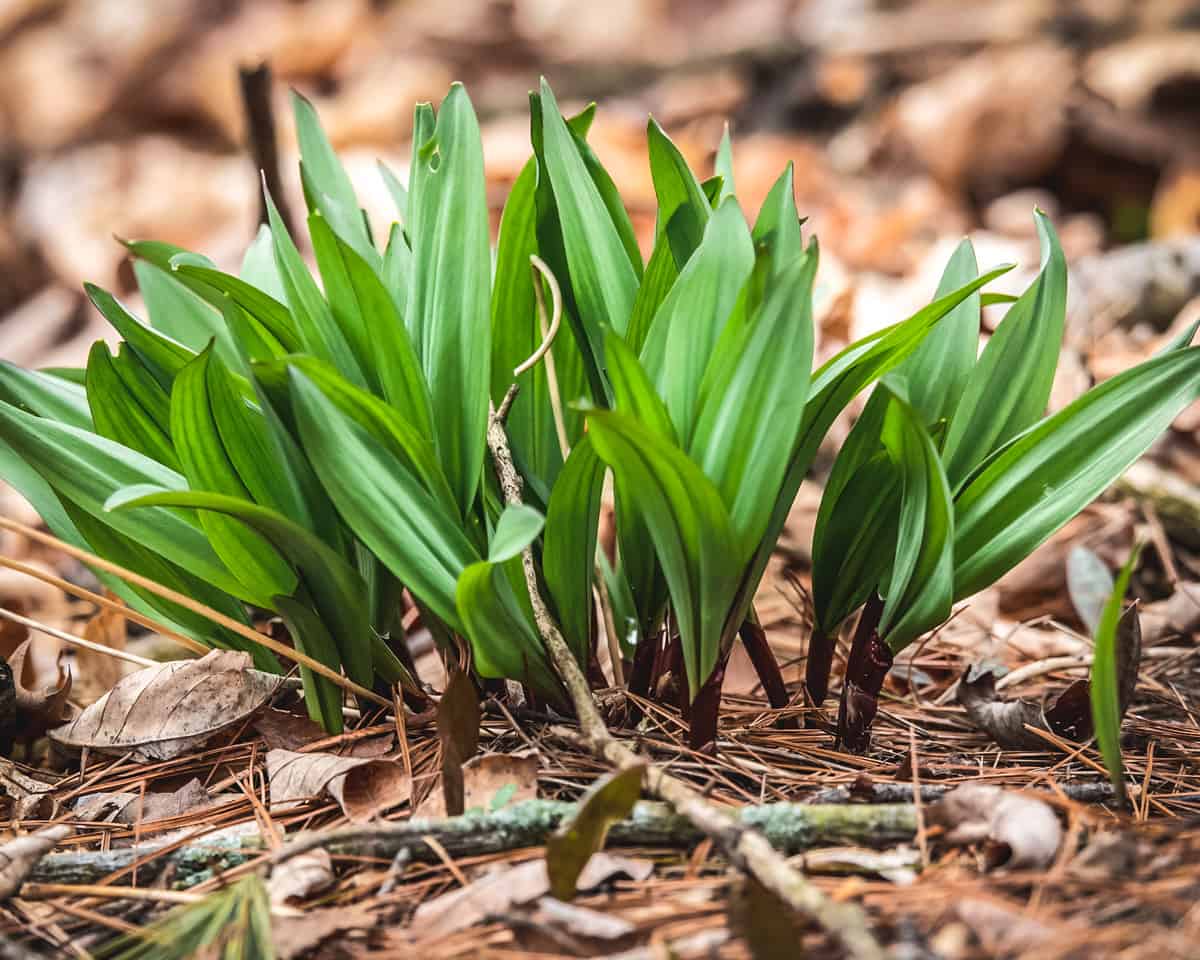
Do Ramps Have Poisonous Look-Alikes?
Wild ramps have two extremely dangerous and deadly toxic look-alikes. It’s just as important to identify these properly as it is to identify the ramp plant.
Both of these toxic plants have wide leaves that come up in spring, and neither of them will have an onion or garlic smell.
False Hellebore (Veratrum viride) leaves can look similar to the wild ramp plant in that they are both pleated. This toxic plant can be identified by its ribbed leaves and lack of onion scent. They grow in swamps and marshes, whereas ramps grow in wooded areas.
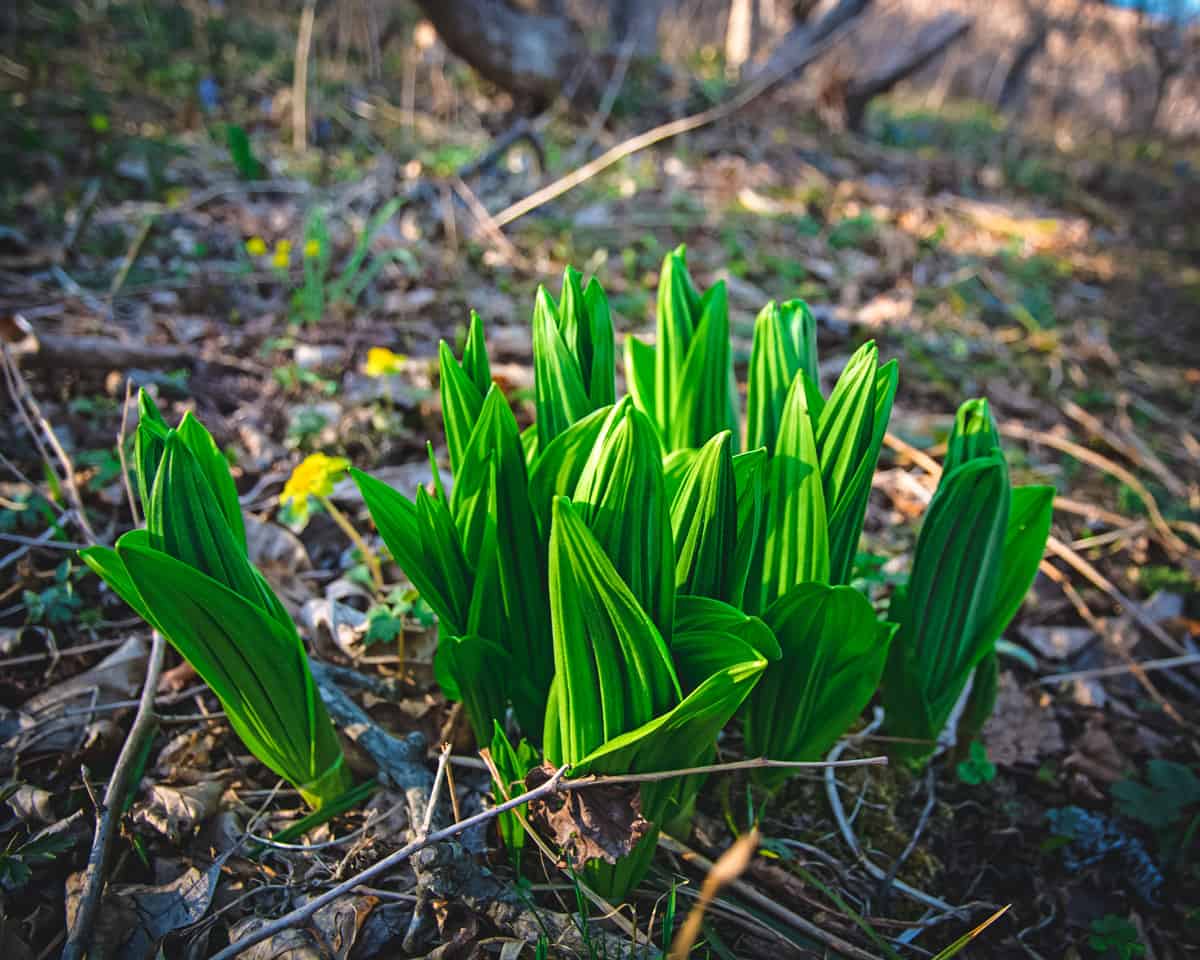
Lily of the Valley (Convallaria majalis) do not have bulbs at the roots like ramps, instead, they have longer roots and rootlets along the length. They produce many bell-shaped flowers in contrast to the small daisy-like clusters that grow on ramp plants. They do not smell like onion or garlic.
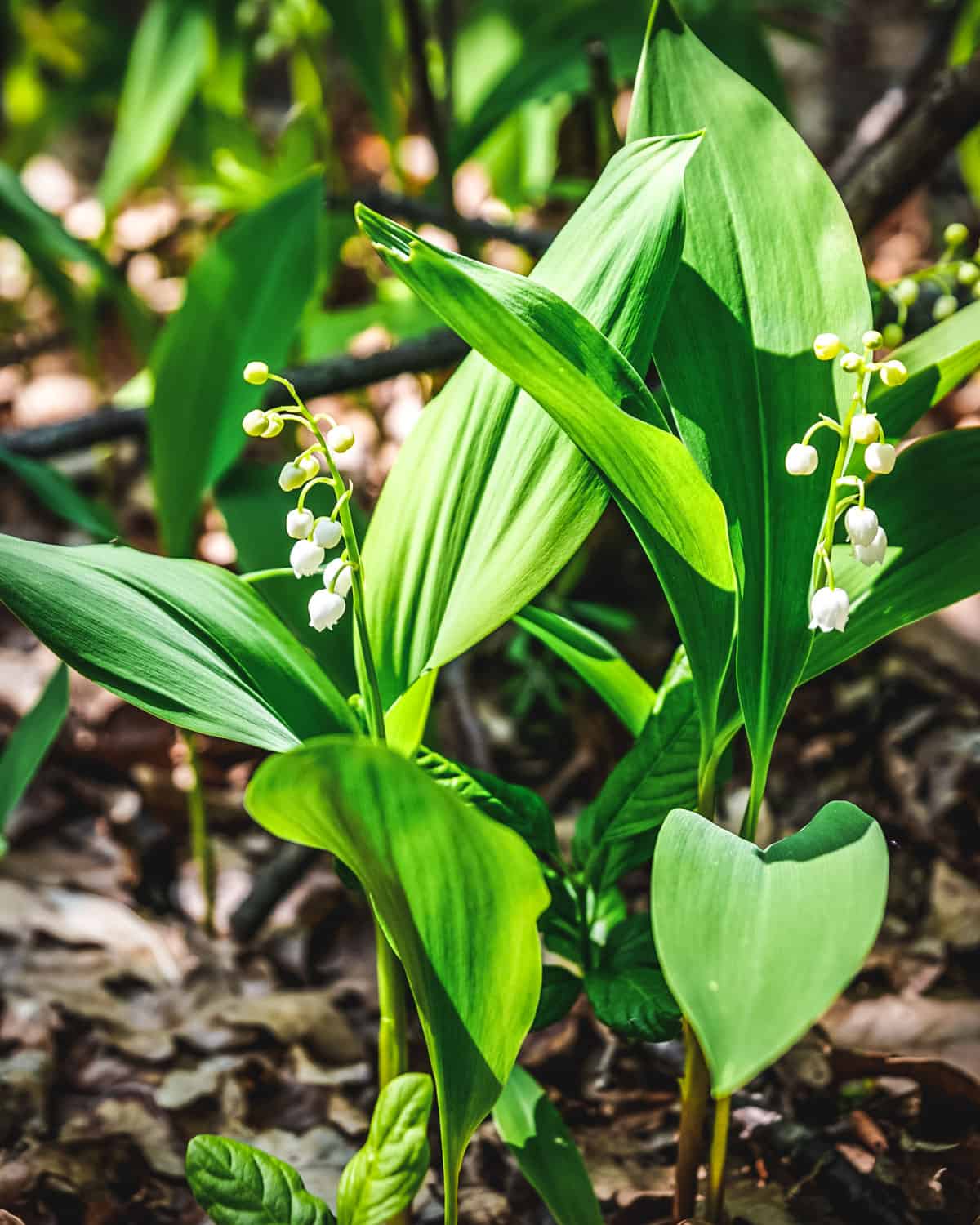
How to Forage Ramps Sustainably
In some areas, wild ramps are protected due to overharvesting so it is important to forage sustainably.
Ramps are a threatened species in many regions, and in some locations, there are regulations on harvesting them. Be sure to check your local laws before foraging them.
Ramps are slow growing, taking 7 years or more to fully mature. Completely pulling up the bulb will kill the plant, so be sure you know how to harvest them correctly before heading out to gather.
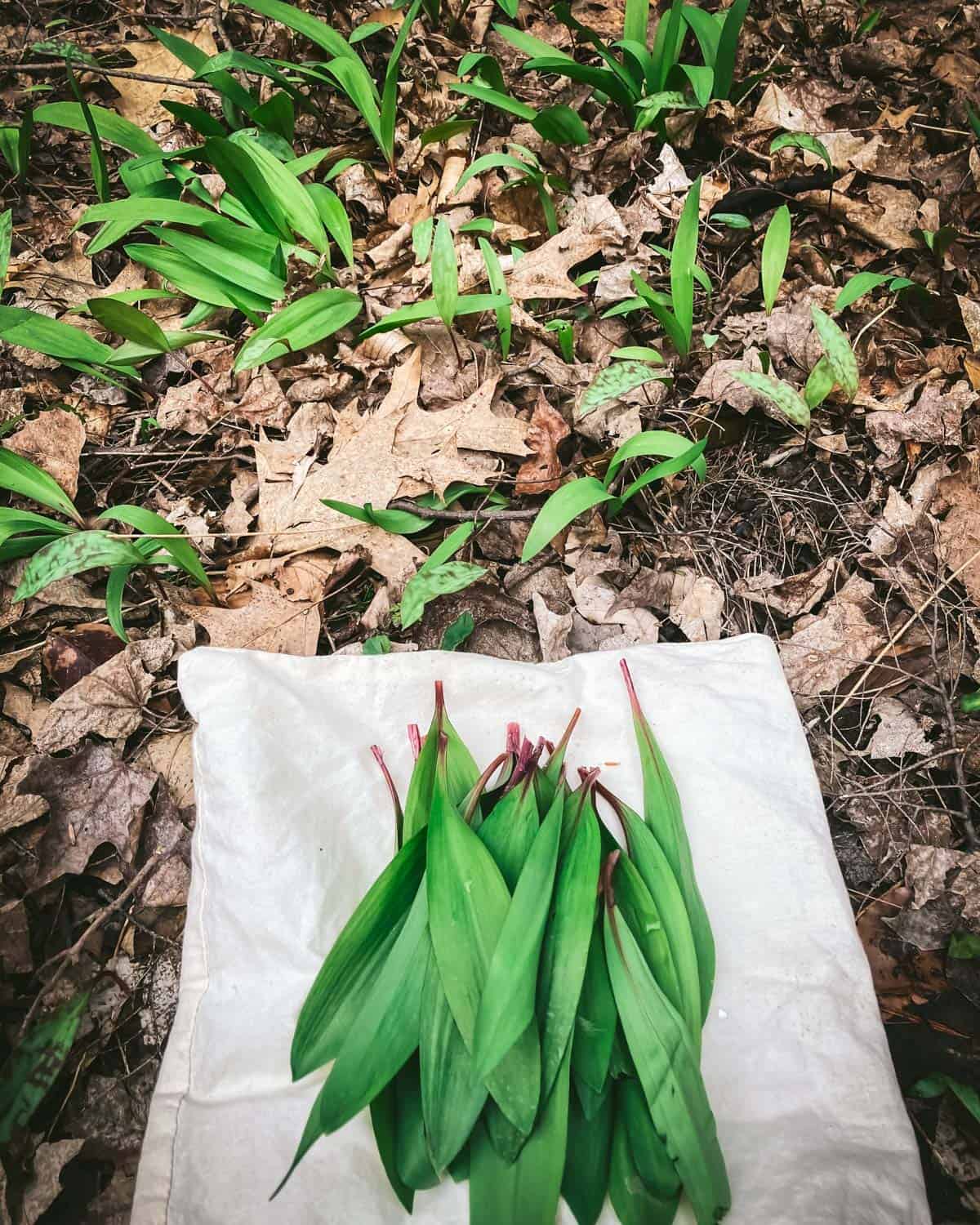
How to Collect Wild Leeks
It is best to only take one leaf per plant without pulling up the bulb. If the bulb or rhizome (the base of the bulb) is left in the ground it will continue to grow year after year.
If you find a patch where it is clear that other foragers have already taken leaves from the plants, move on to a different patch. Overharvesting the leaves is detrimental to the plant.
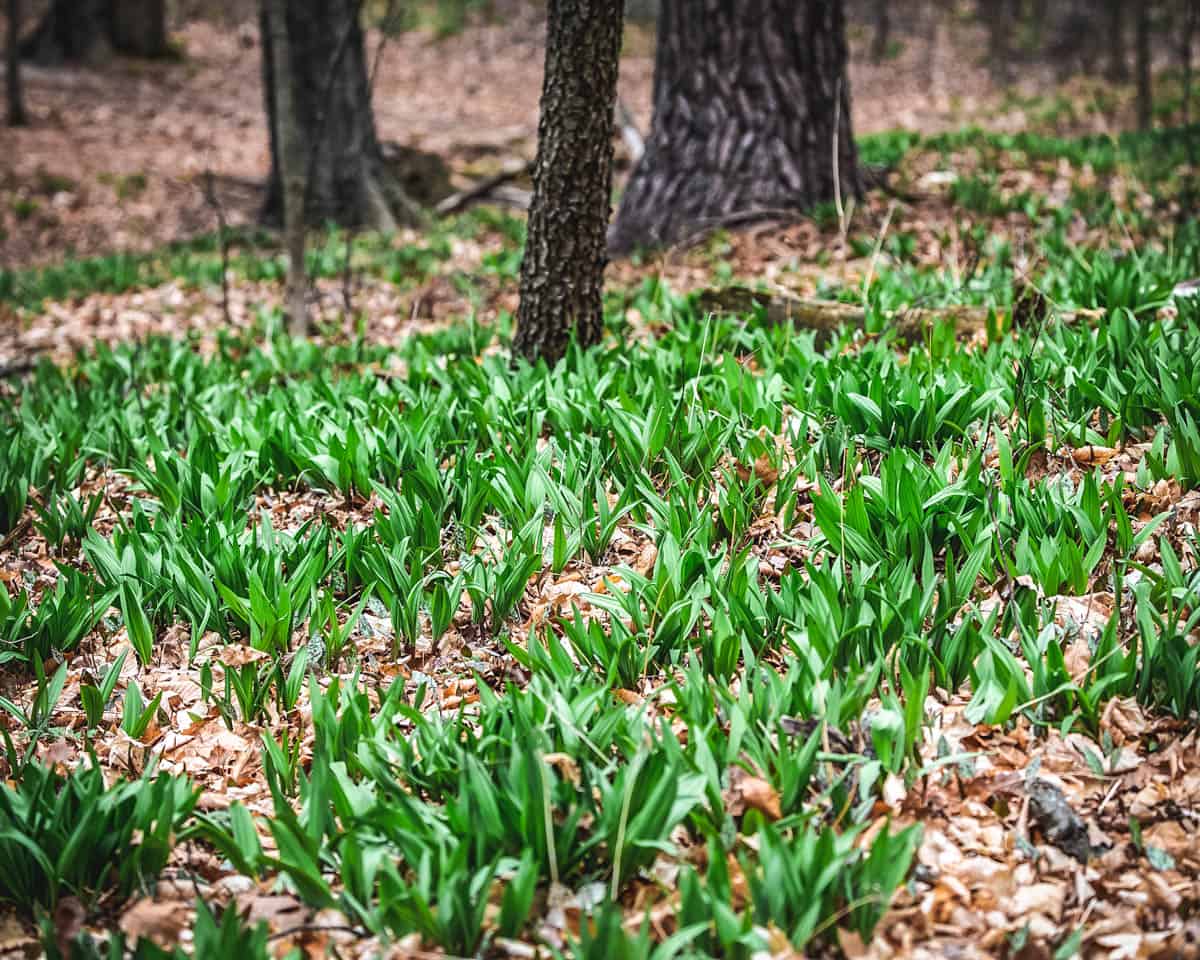
Harvesting leaves is much easier and cleaner than pulling up bulbs. The good news about only harvesting the leaves is that the leaves have tons of flavor, so pulling up the bulbs is not necessary!
If you live in a region where ramps grow prolifically as they do in some areas of Vermont, it can be helpful in large and very dense colonies to selectively pull up some bulbs.
The bulbs or rhizomes can be replanted either elsewhere in the forest or on your property, ultimately helping the population of ramp plants.
Before pulling up and replanting any wild leek bulbs, research to determine if it is permitted in your region.
Take seeds after the plant flowers in the summer and spread them to other areas of the forest or bring them home to plant in your garden.
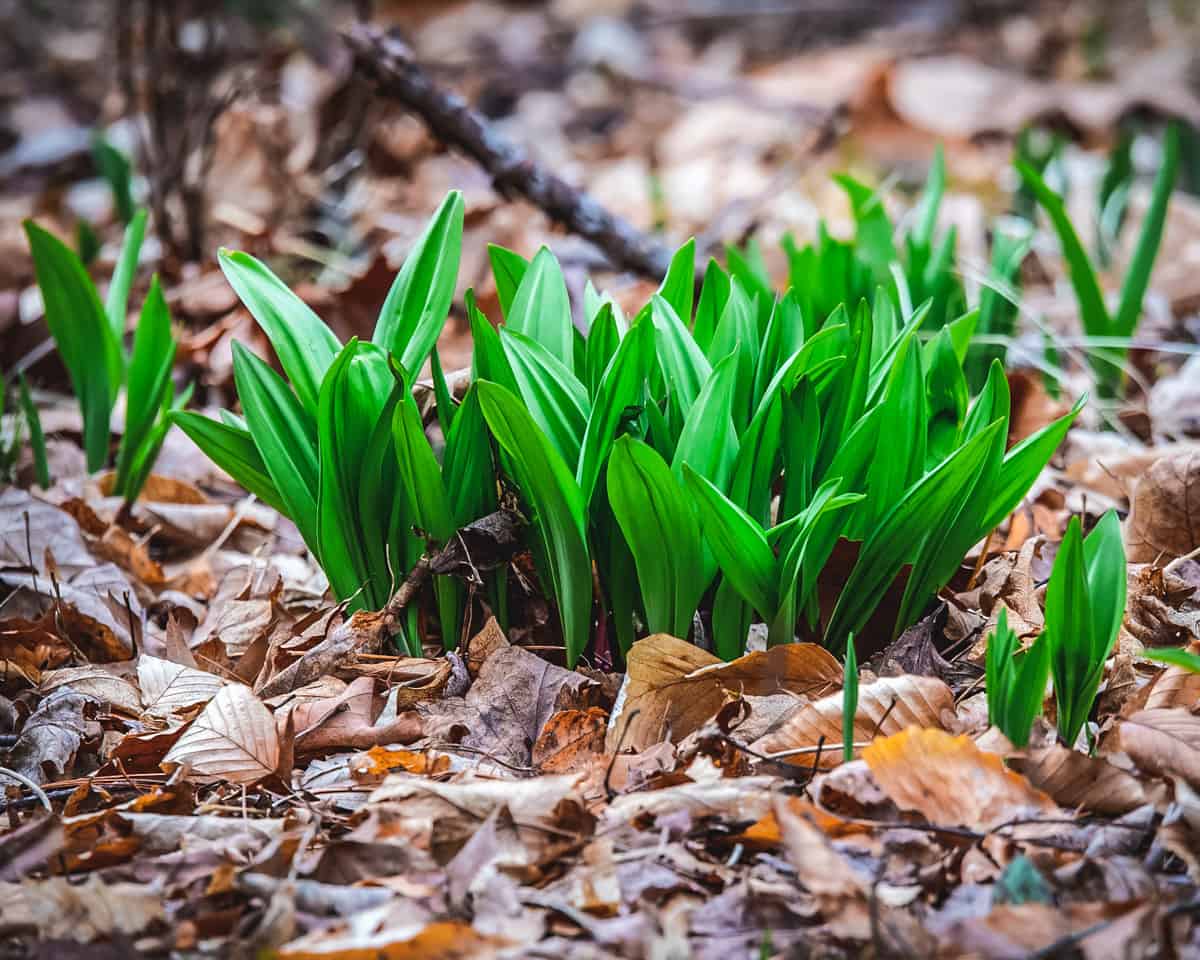
How to Grow Ramps
Since the population of wild ramps is protected and in a state of decline, grow them in your yard for a great way to have access to their delicious flavors without threatening the wild population.
Grow ramps from seeds, bulbs, starts, or by transplanting wild plants or rhizomes. Read this guide on how to grow ramps in your backyard for all of the best methods.
They have a long germination period if growing from seed, and once sprouted the plants take 7 years or more to fully mature. Patience is key!
These tasty plants need shade and moisture. They tend to do best under hardwood trees, just like when finding them growing wildly.
A good way to keep this threatened plant around is by growing your own!
How to Use Ramps
Just like their smell, wild ramps have a distinct onion or garlicky taste. The taste will mellow out when cooked but are still very flavorful.
For a stronger flavor, know that wild ramps are safe to eat raw! Try them in this delicious ramp pesto recipe.
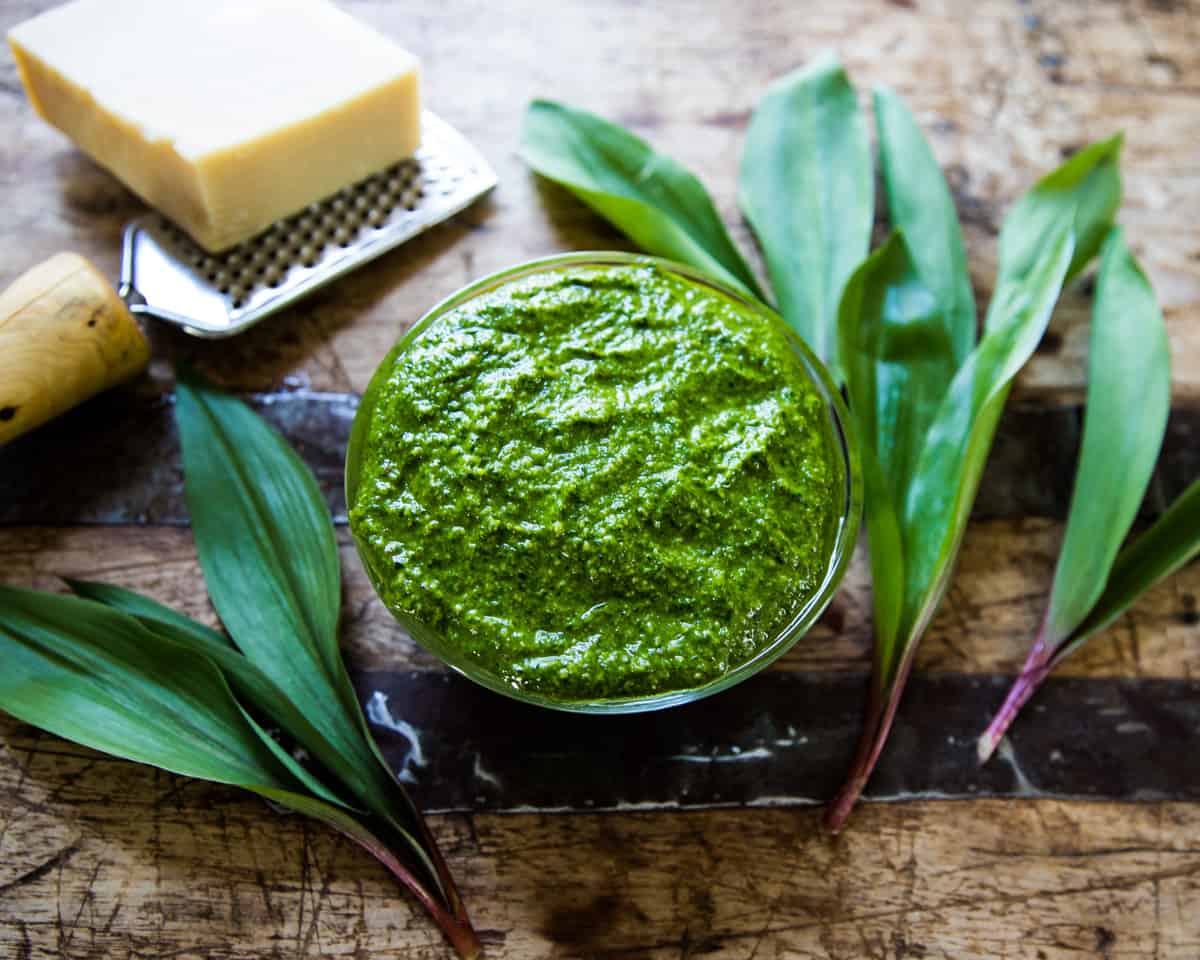
To preserve ramp leaves and enjoy them all year, make ramp butter and freeze it, or make pickled ramps.
Another great way to preserve wild leeks is to ferment them, of course! Try this ramp kraut recipe.
Add ramps to a delicious dinner and saute them in this ramp pasta, with a side of ramp focaccia bread or buttermilk ramp biscuits, yum!
However you choose to use your sustainably foraged wild ramps, they’ll be a delicious and appreciated part of your meal!

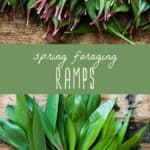
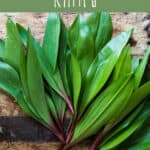

I’m looking for an easy recipe for ramp / leek butter is it freezable ? How long does it last in the fridge ?
I haven’t made ramp butter, so I’m not sure.
Yes I make Ramp butter. Just finely chop your Ramps and add them to room temperature softened butter. Massage the Ramps into the butter, form into a ball or log, wrap tightly in plastic food wrap, place in freezer zip lock bag (or vac seal bag) and freeze. Should keep up to 12 months. FYI, you can also make pesto with Ramps (follow any pesto recipe and add Ramps into it), freeze in zip bag or use ice cube tray; freeze them then put into zip lock bag and freeze for ease of use.